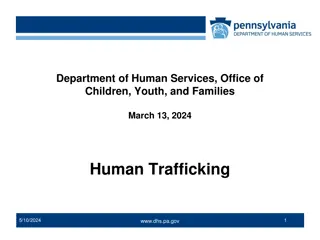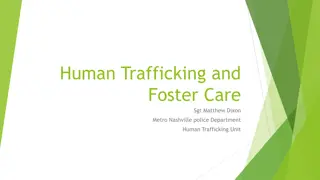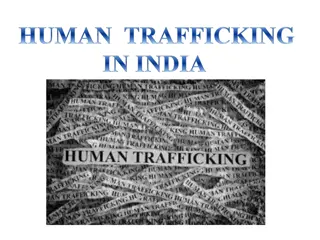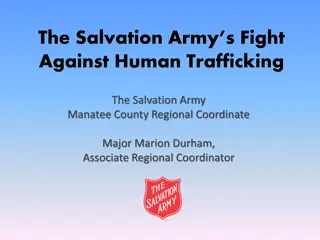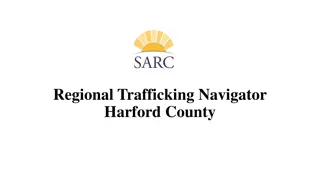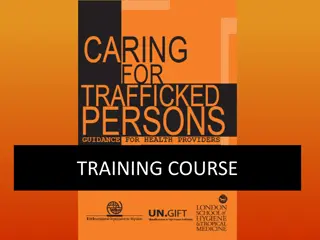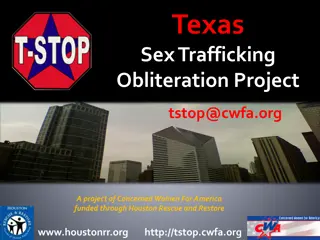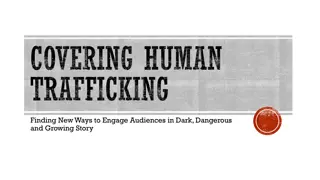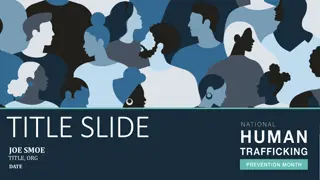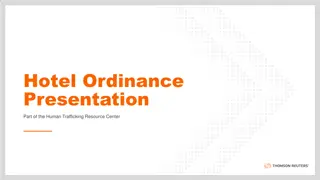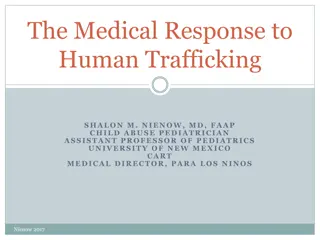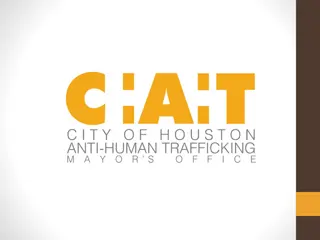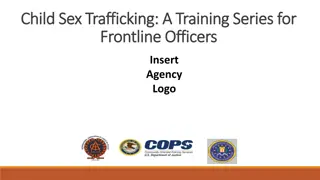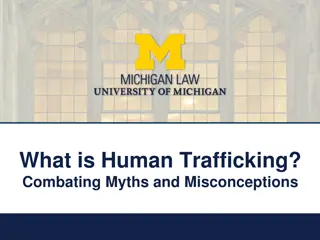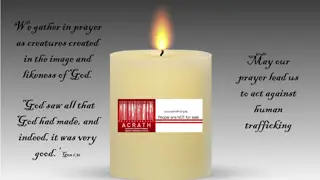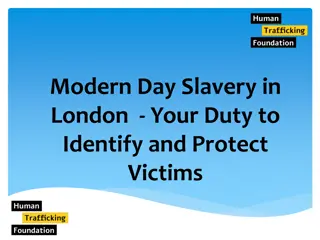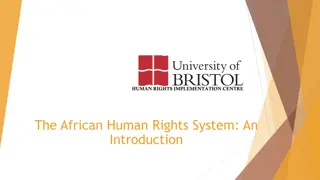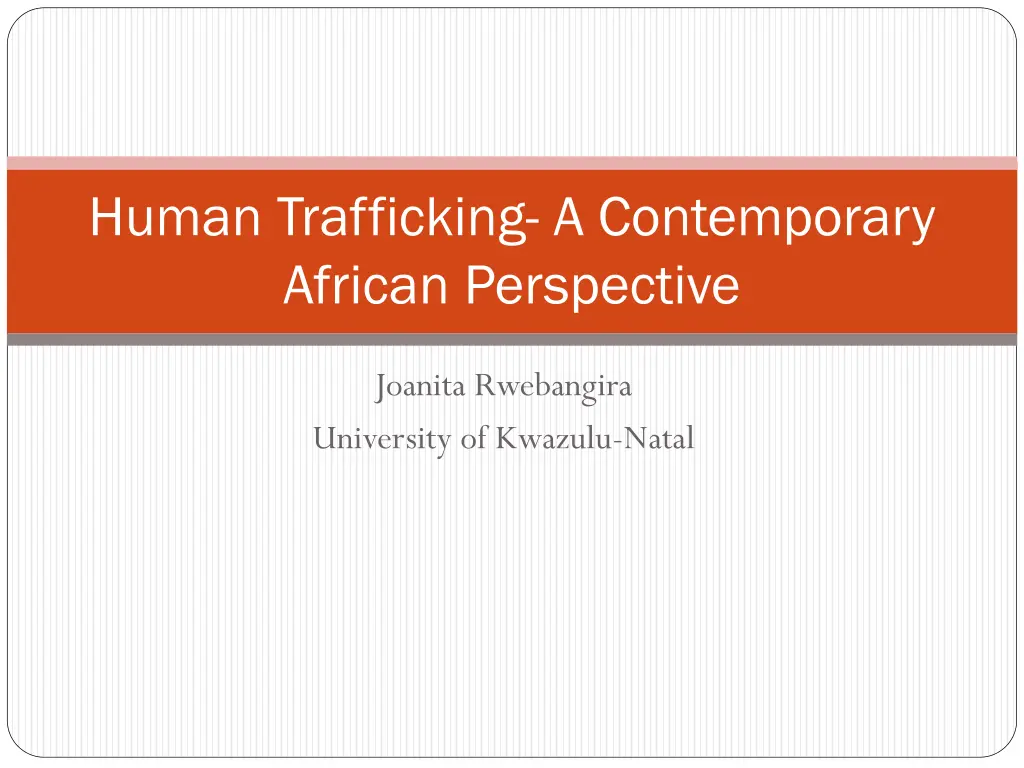
Exploring Human Trafficking in Africa: Perspectives and Challenges
Gain insights into the complexities of human trafficking in Africa, including its impact on individuals and nations. Discover how some African countries are progressing in creating policies to combat human trafficking, while facing obstacles such as corruption and inadequate government response. Learn about the various dimensions and faces of human trafficking, from commercial sexual exploitation to forced labor, and understand the international and regional frameworks in place to address this critical issue.
Uploaded on | 0 Views
Download Presentation

Please find below an Image/Link to download the presentation.
The content on the website is provided AS IS for your information and personal use only. It may not be sold, licensed, or shared on other websites without obtaining consent from the author. If you encounter any issues during the download, it is possible that the publisher has removed the file from their server.
You are allowed to download the files provided on this website for personal or commercial use, subject to the condition that they are used lawfully. All files are the property of their respective owners.
The content on the website is provided AS IS for your information and personal use only. It may not be sold, licensed, or shared on other websites without obtaining consent from the author.
E N D
Presentation Transcript
Human Trafficking- A Contemporary African Perspective Joanita Rwebangira University of Kwazulu-Natal
Background Trafficking in the African context is still very complex, multidimensional, multisectoral, illicit industry affecting both individuals and nations across Africa. In addition to being an issue of international and criminal law, trafficking affects human rights, labour, migration, public health, socio-economic development and morality. In recent years, South Africa has undertaken the formulation of Trafficking in Persons legislation. Despite the evidence that trafficking affects most countries in the world and is a growing illicit industry with devastating impacts, very few African countries have policy related to human trafficking.
Background In an attempt to contribute towards the creation of human trafficking policy, some countries in Africa have made some sensible progress in terms of the law and constitution which has now covered human trafficking making it less visible but with improved methods enhanced by the assistance from institutions of power.
Dimensions of Human Trafficking Less visible human trafficking with improved methods Technology cellphone, internet, Mpesa The law enforcement agencies The level of corruption Government not doing much
Dimensions of Human Trafficking More clarity and explanation of what human trafficking is Human trafficking dons many faces including commercial sexual exploitation, slave labour, bride selling, debt bondage, organ harvesting, forced begging, and forced drug dealing, exploitation during armed conflict and the use of child soldiers. Victims of trafficking can be exploited throughout many industries such as agriculture, construction, manufacturing, tourism, domestic service and the sex industry.
Dimensions of Human Trafficking The challenging obstacles: By 2007, most Southern African Development Community (SADC) countries were without anti trafficking policy and laws and relied upon different laws, policies and regulations to tackle the problem. The Migration Dialogue for SouthernAfrica (MIDSA) postulated that the fact that most countries were signatories of trafficking-related protocols had not yet parlayed itself into domestic law In addition to rights-based regional instruments, South Africa ratified two predominant international charters that speak to trafficking: the UN Convention on the Rights of the Child; and the UN Protocol to Prevent, Suppress, and Punish Trafficking in Persons, especially Women and Children (also commonly referred to as the Palermo Protocol or the Trafficking Protocol).Other relevant international charters were also ratified
Recommendations States that have yet to do so, should ratify the UN Protocol on Trafficking Broad consultation with relevant stakeholders from diverse sectors should be engaged Policy efforts should be coordinated and cooperation secured across relevant departments, agencies and the civil society sector. Labour exploitation and migration issues should always be reflected in policies. The approach to policy development must be rights-based, victim-centred and include aftercare services.
Recommendations Policies should be harmonized and consistent with all laws to avoid confusion or duplication. Specific and committed task teams, with clear mandates and budgets, should be created to combat trafficking. Strategic plans should be formulated and implemented for the prevention and handling of trafficking violations during international events. Policies should reflect a broad approach, offering both mandatory and optional requirements, as well as clearly outlined objectives, scope and definitions.
Recommendations Research, data collection, proper victim classification and information sharing should be promoted and carried out among relevant stakeholders, including intelligence agencies, immigration officers and task teams. Policies should speak to the role of new technologies(including the Internet and social networking sites) and consider the role of technology in preventing and fighting trafficking. Bilateral and multilateral agreements should be pursued with neighboring states. Top-level officials, members of parliament and ministers should be involved in the policy process to insure awareness and buy-in.

